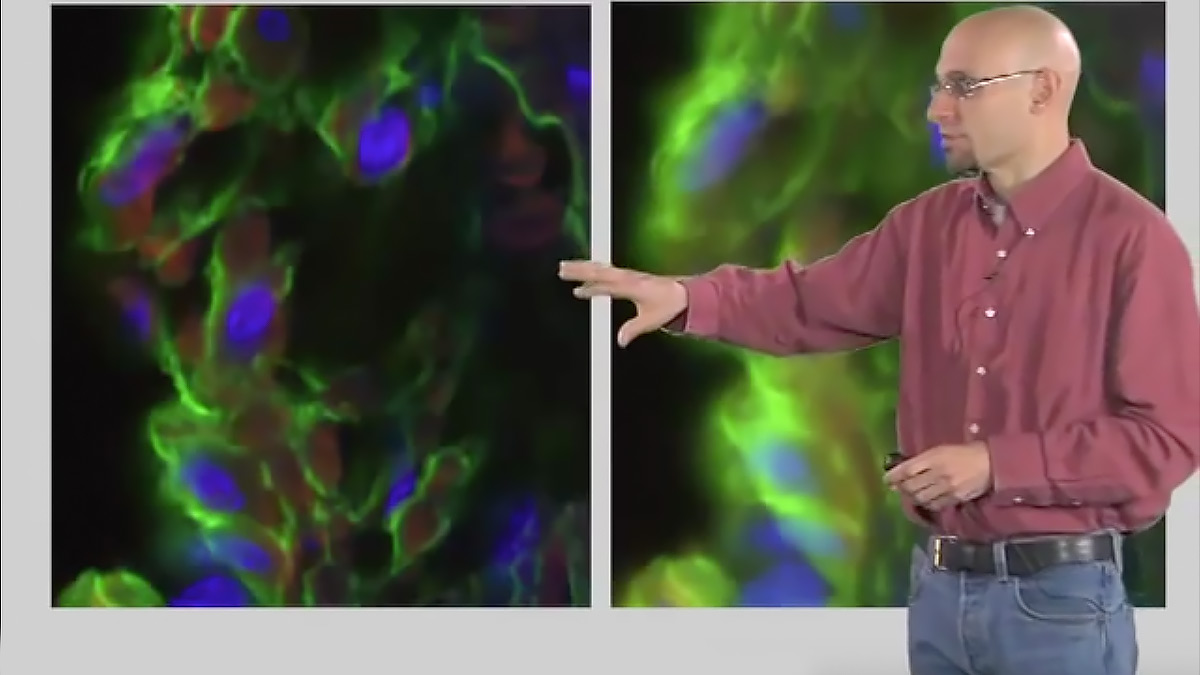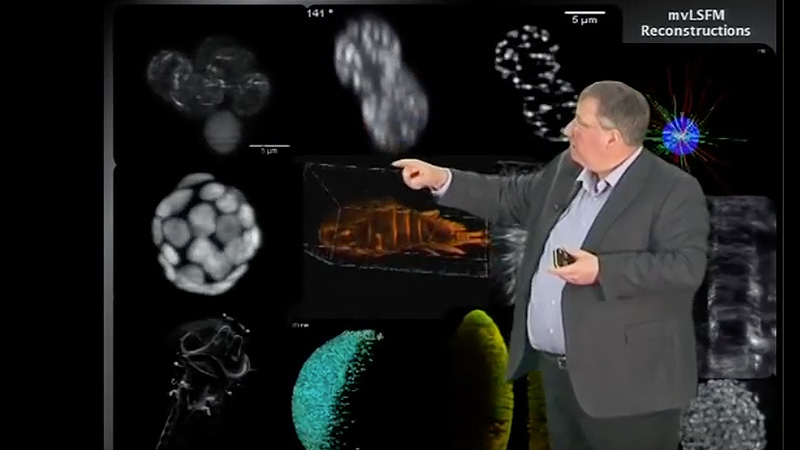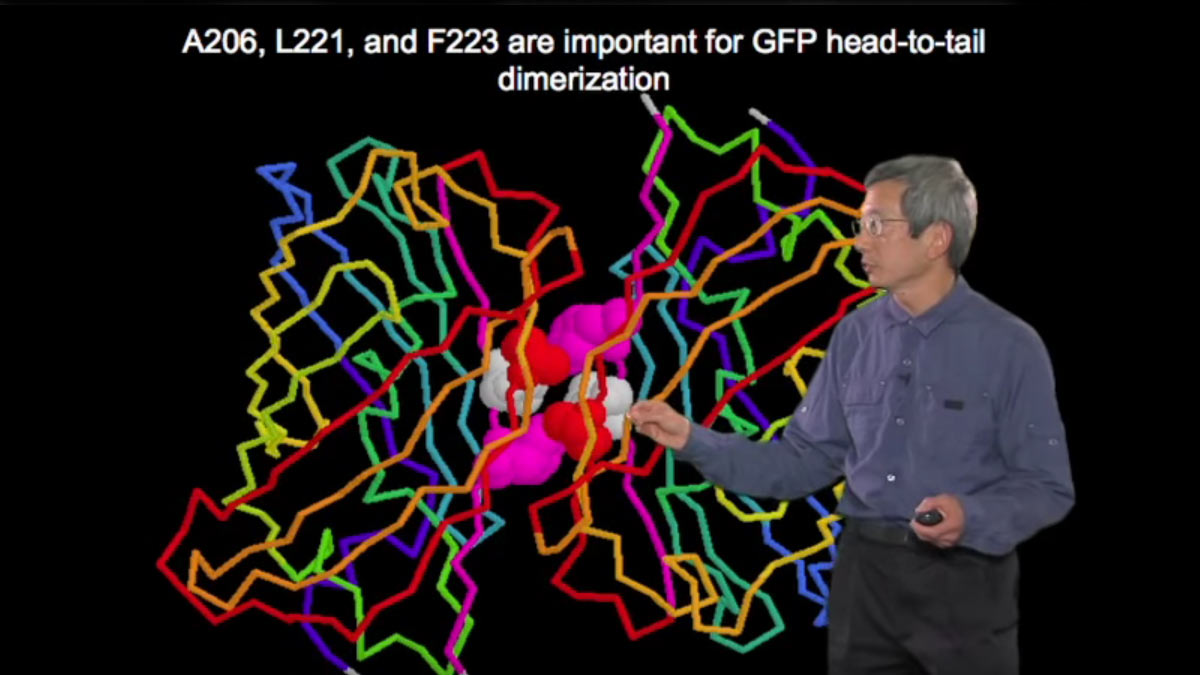Talk Overview
In this talk titled “Fluorescent Protein Indicators,” Roger Tsien discusses how fluorescent proteins have been turned into indicators for a wide variety of biological properties, including pH, redox potential, as well as for signaling molecules such as phosphoinositides. The talk also describes how reporters are used to measure the activity of enzymes like kinases, phosphatases, and proteases. It covers both single proteins whose intensity or wavelength changes, as well as reporters using Forster resonance energy transfer (FRET).
Questions
- What changes in a cell can fluorescent indicators measure? (select all that apply):
- Signaling pathway activation
- Change in pH
- Protein concentration increase
- Ca+2 signaling
- Cell cycle procession
- Briefly describe the four categories of fluorescent indicators.
- FRET sensors can be used to measure which of the following (choose all that apply):
- Changes in pH
- Protein-protein interactions
- Ca 2+ levels
- Protease activity
- What is the biggest limitation of fluorescent protein pH indicators?
- What is the biggest advantage to using bimolecular fluorescence complementation?
Answers
View AnswersSpeaker Bio
Roger Tsien

Dr. Tsien was a Professor at the University of California, San Diego, a Howard Hughes Medical Institute Investigator and a member of the National Academy of Sciences. In 2008, Tsien shared the Nobel Prize in Chemistry for the discovery and development of green fluorescent protein, GFP. His lab continues to develop new fluorescent proteins as… Continue Reading









Leave a Reply